Joachim Gudmundsson
Exploring Sub-skeleton Trajectories for Interpretable Recognition of Sign Language
Feb 03, 2022



Abstract:Recent advances in tracking sensors and pose estimation software enable smart systems to use trajectories of skeleton joint locations for supervised learning. We study the problem of accurately recognizing sign language words, which is key to narrowing the communication gap between hard and non-hard of hearing people. Our method explores a geometric feature space that we call `sub-skeleton' aspects of movement. We assess similarity of feature space trajectories using natural, speed invariant distance measures, which enables clear and insightful nearest neighbor classification. The simplicity and scalability of our basic method allows for immediate application in different data domains with little to no parameter tuning. We demonstrate the effectiveness of our basic method, and a boosted variation, with experiments on data from different application domains and tracking technologies. Surprisingly, our simple methods improve sign recognition over recent, state-of-the-art approaches.
A Practical Index Structure Supporting Fréchet Proximity Queries Among Trajectories
May 28, 2020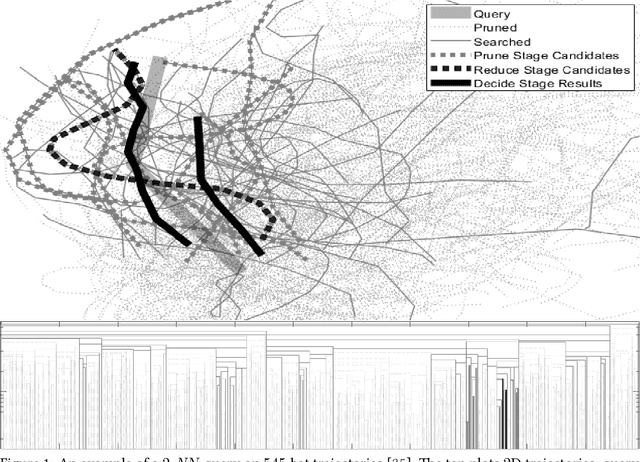
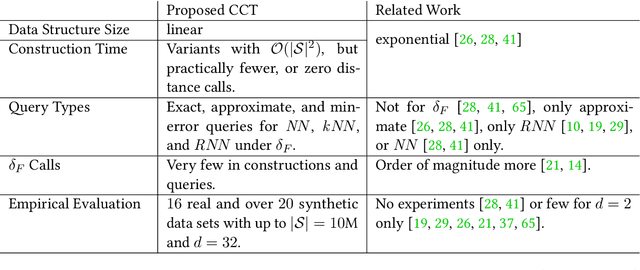
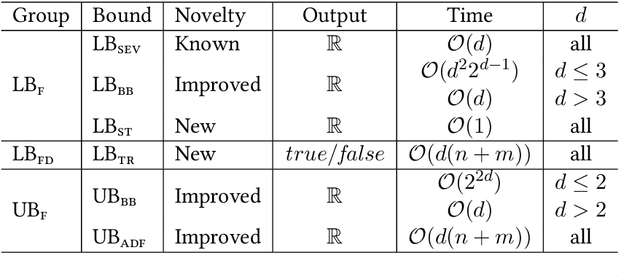

Abstract:We present a scalable approach for range and $k$ nearest neighbor queries under computationally expensive metrics, like the continuous Fr\'echet distance on trajectory data. Based on clustering for metric indexes, we obtain a dynamic tree structure whose size is linear in the number of trajectories, regardless of the trajectory's individual sizes or the spatial dimension, which allows one to exploit low `intrinsic dimensionality' of data sets for effective search space pruning. Since the distance computation is expensive, generic metric indexing methods are rendered impractical. We present strategies that (i) improve on known upper and lower bound computations, (ii) build cluster trees without any or very few distance calls, and (iii) search using bounds for metric pruning, interval orderings for reduction, and randomized pivoting for reporting the final results. We analyze the efficiency and effectiveness of our methods with extensive experiments on diverse synthetic and real-world data sets. The results show improvement over state-of-the-art methods for exact queries, and even further speed-ups are achieved for queries that may return approximate results. Surprisingly, the majority of exact nearest-neighbor queries on real data sets are answered without any distance computations.
A Visual Measure of Changes to Weighted Self-Organizing Map Patterns
Mar 27, 2017



Abstract:Estimating output changes by input changes is the main task in causal analysis. In previous work, input and output Self-Organizing Maps (SOMs) were associated for causal analysis of multivariate and nonlinear data. Based on the association, a weight distribution of the output conditional on a given input was obtained over the output map space. Such a weighted SOM pattern of the output changes when the input changes. In order to analyze the change, it is important to measure the difference of the patterns. Many methods have been proposed for the dissimilarity measure of patterns. However, it remains a major challenge when attempting to measure how the patterns change. In this paper, we propose a visualization approach that simplifies the comparison of the difference in terms of the pattern property. Using this approach, the change can be analyzed by integrating colors and star glyph shapes representing the property dissimilarity. Ecological data is used to demonstrate the usefulness of our approach and the experimental results show that our approach provides the change information effectively.
Classification of Passes in Football Matches using Spatiotemporal Data
Jul 18, 2014
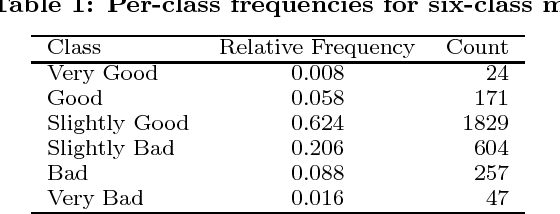
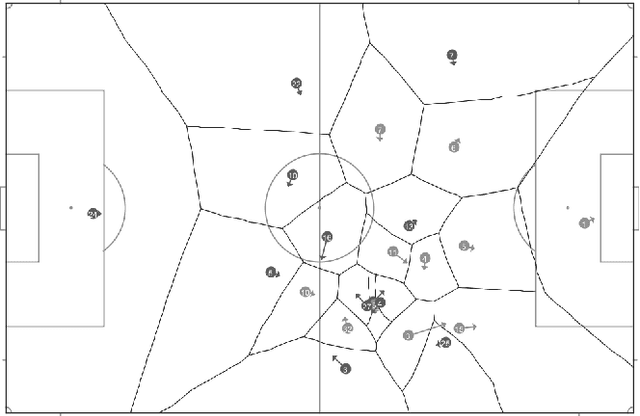
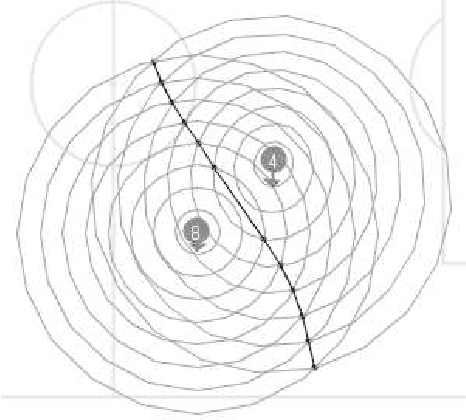
Abstract:A knowledgeable observer of a game of football (soccer) can make a subjective evaluation of the quality of passes made between players during the game. We investigate the problem of producing an automated system to make the same evaluation of passes. We present a model that constructs numerical predictor variables from spatiotemporal match data using feature functions based on methods from computational geometry, and then learns a classification function from labelled examples of the predictor variables. Furthermore, the learned classifiers are analysed to determine if there is a relationship between the complexity of the algorithm that computed the predictor variable and the importance of the variable to the classifier. Experimental results show that we are able to produce a classifier with 85.8% accuracy on classifying passes as Good, OK or Bad, and that the predictor variables computed using complex methods from computational geometry are of moderate importance to the learned classifiers. Finally, we show that the inter-rater agreement on pass classification between the machine classifier and a human observer is of similar magnitude to the agreement between two observers.
Computational Aspects of Multi-Winner Approval Voting
Jul 11, 2014
Abstract:We study computational aspects of three prominent voting rules that use approval ballots to elect multiple winners. These rules are satisfaction approval voting, proportional approval voting, and reweighted approval voting. We first show that computing the winner for proportional approval voting is NP-hard, closing a long standing open problem. As none of the rules are strategyproof, even for dichotomous preferences, we study various strategic aspects of the rules. In particular, we examine the computational complexity of computing a best response for both a single agent and a group of agents. In many settings, we show that it is NP-hard for an agent or agents to compute how best to vote given a fixed set of approval ballots from the other agents.
 Add to Chrome
Add to Chrome Add to Firefox
Add to Firefox Add to Edge
Add to Edge